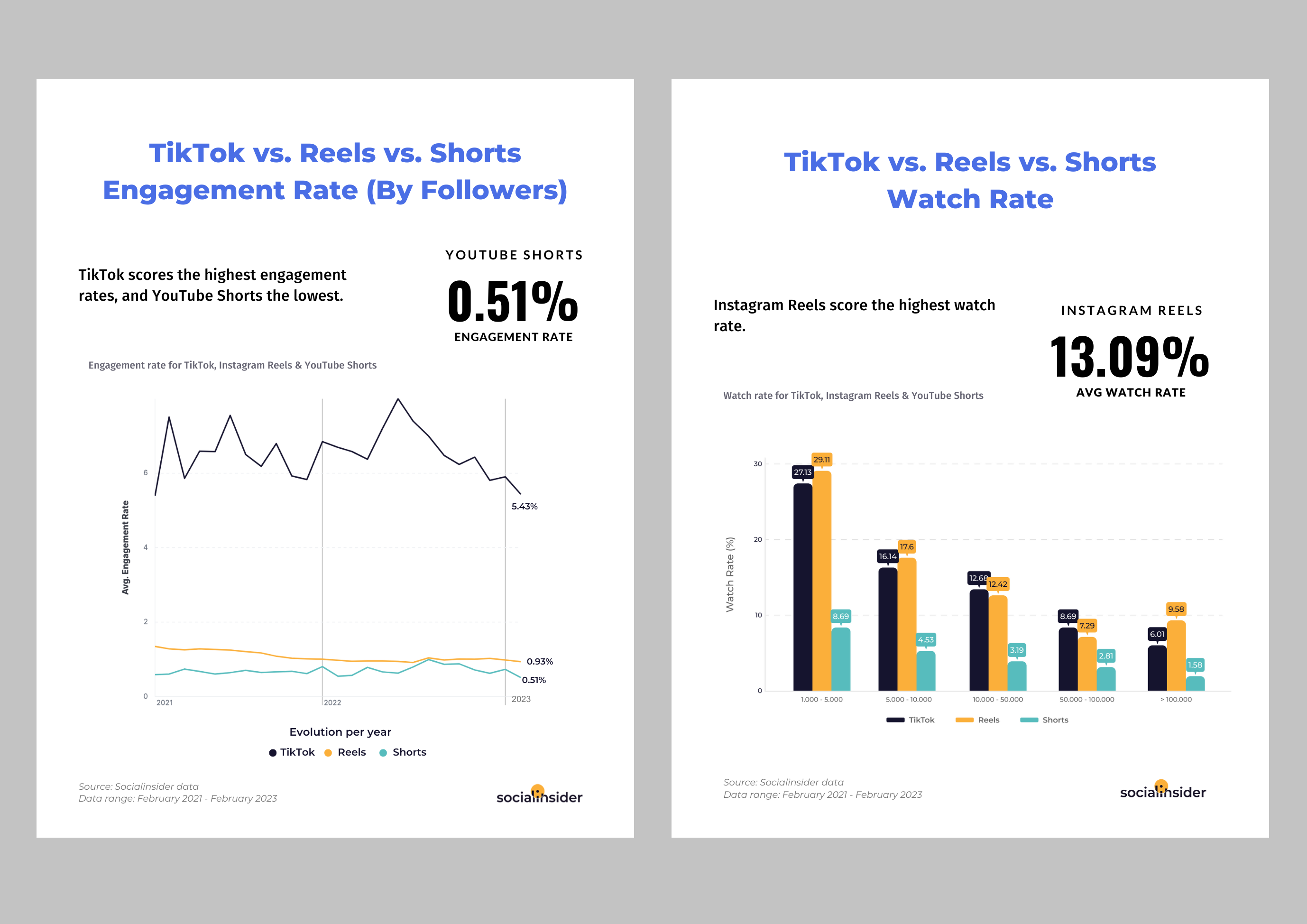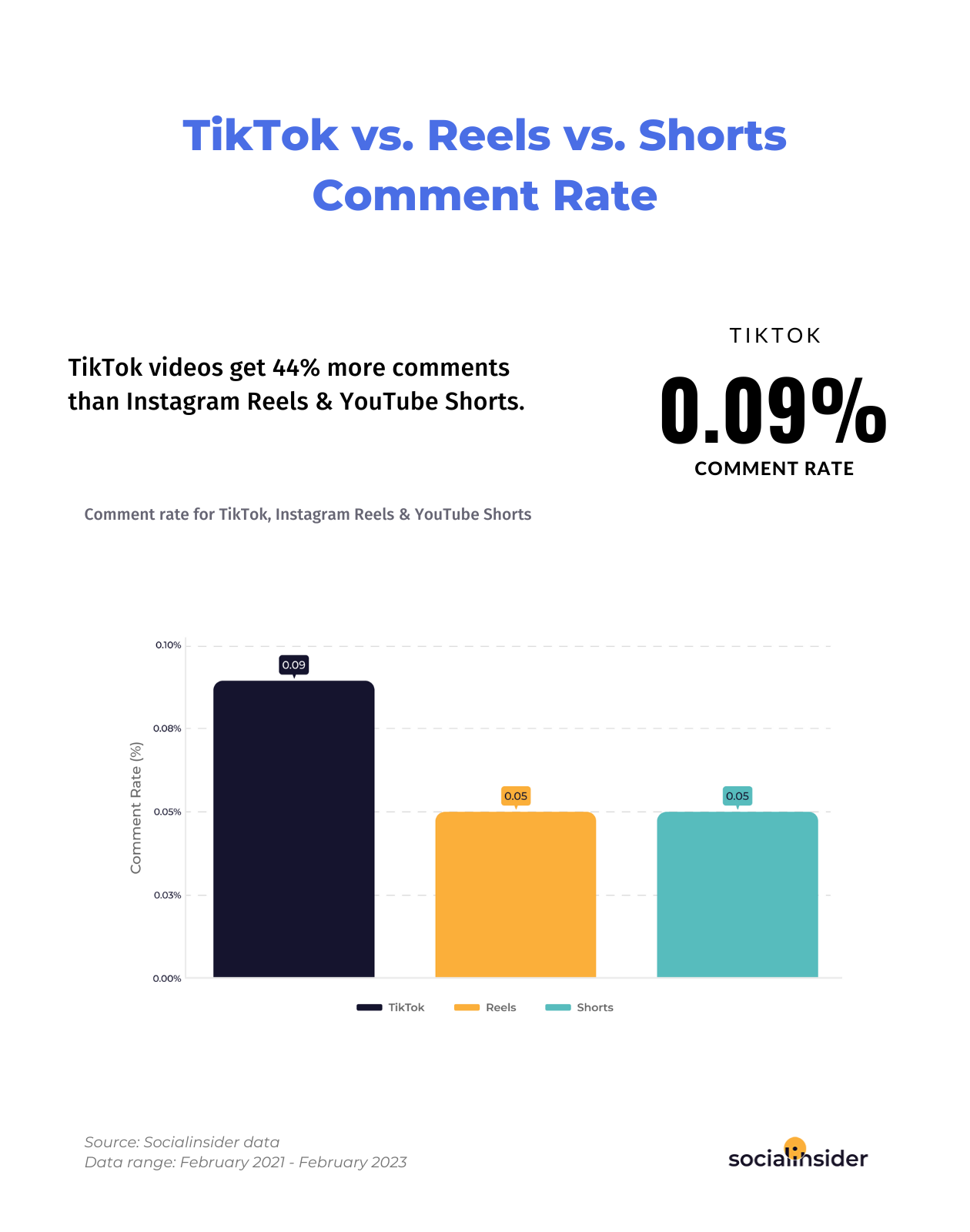The rise of TikTok made it clear that short form video was the future of the entire social media industry, and its unique algorithm allowed it to skyrocket in terms of its popularity. This obviously led to other companies trying to follow suit because of the fact that this is the sort of thing that could potentially end up allowing them to compete with TikTok. YouTube launched its Shorts feature, and Instagram brought Reels for its users which served similar purposes.
With all of that having been said and now out of the way, it is important to note that Social Insider recently put out a report that revealed which of these short form video platforms is winning out. It turns out that TikTok provides a higher return on investment for brands that are marketing on it, at least as far as Gen Z is concerned.
In spite of the fact that this is the case, Instagram Reels proved to be far more effective for the Millennial crowd, so brands might have to choose based on the demographic that they are targeting. YouTube Shorts was relatively late to the party, but the platform has still managed to rack up an impressive 15 billion daily views which suggests that it might be on the rise. Its monthly active users currently amount to 1.5 billion as well.
Another way to determine the superiority of various short form video services is to take a look at the engagement that they receive. Simple put, TikTok videos tend to get 44% more than the number of comments one Reels and Shorts.
What’s more, TikTok wins out in the overall number of posts that users add to the platform. Twice as many videos are posted on TikTok than on Reels and YouTube Shorts, and this volume of content definitely gives TikTok a real edge with all things having been considered and taken into account.
However, Instagram Reels is also seeing a fair amount of success. With a watch rate of about 13.08%, Instagram Reels is far superior to TikTok’s 9.06% watch rate. This just goes to show that TikTok’s dominance is by no means absolute. TikTok might offer more quantity, but Reels is surpassing it at least in terms of quality.
YouTube actually falls behind quite a bit here, with an average watch rate around 2.85%. This reveals that both TikTok and Instagram surpass YouTube considerably, although this might change in the near future as YouTube Shorts continue to grow as a platform.
A few things become apparent thanks to the findings of this analysis. Firstly, brands that are looking for higher watch rates but are not all that concerned with engagement will likely want to prioritize Instagram Reels as much as they can
However, any brand that prioritizes engagement above all else will be far better served by TikTok. The enormous volume of content that is being posted there notwithstanding, and regardless of the lower watch rate as compared to Reels, TikTok videos have undeniable edge in terms of engagement. Driving engagement can be a primary concern for brands that are attempting to maximize their reach on any given platform, which makes TikTok the clear winner for a number of reasons.
One thing that marketers should keep in mind is that each of these platforms require a different approach. If you are focusing on TikTok, you should post around ten to fifteen videos per month, which would come up to three to four videos every week.
On Instagram, a posting frequency of about 10 Reels per month should do the trick. As for YouTube, this platform will work best for you if you post around 2 shorts a week, which would total approximately 8 shorts on a monthly basis. Posting frequency can be critical to the success of a marketing campaign.
Read next: This Report Highlights the State of Sensitive Data
With all of that having been said and now out of the way, it is important to note that Social Insider recently put out a report that revealed which of these short form video platforms is winning out. It turns out that TikTok provides a higher return on investment for brands that are marketing on it, at least as far as Gen Z is concerned.
In spite of the fact that this is the case, Instagram Reels proved to be far more effective for the Millennial crowd, so brands might have to choose based on the demographic that they are targeting. YouTube Shorts was relatively late to the party, but the platform has still managed to rack up an impressive 15 billion daily views which suggests that it might be on the rise. Its monthly active users currently amount to 1.5 billion as well.
Another way to determine the superiority of various short form video services is to take a look at the engagement that they receive. Simple put, TikTok videos tend to get 44% more than the number of comments one Reels and Shorts.
What’s more, TikTok wins out in the overall number of posts that users add to the platform. Twice as many videos are posted on TikTok than on Reels and YouTube Shorts, and this volume of content definitely gives TikTok a real edge with all things having been considered and taken into account.
However, Instagram Reels is also seeing a fair amount of success. With a watch rate of about 13.08%, Instagram Reels is far superior to TikTok’s 9.06% watch rate. This just goes to show that TikTok’s dominance is by no means absolute. TikTok might offer more quantity, but Reels is surpassing it at least in terms of quality.
YouTube actually falls behind quite a bit here, with an average watch rate around 2.85%. This reveals that both TikTok and Instagram surpass YouTube considerably, although this might change in the near future as YouTube Shorts continue to grow as a platform.
A few things become apparent thanks to the findings of this analysis. Firstly, brands that are looking for higher watch rates but are not all that concerned with engagement will likely want to prioritize Instagram Reels as much as they can
However, any brand that prioritizes engagement above all else will be far better served by TikTok. The enormous volume of content that is being posted there notwithstanding, and regardless of the lower watch rate as compared to Reels, TikTok videos have undeniable edge in terms of engagement. Driving engagement can be a primary concern for brands that are attempting to maximize their reach on any given platform, which makes TikTok the clear winner for a number of reasons.
One thing that marketers should keep in mind is that each of these platforms require a different approach. If you are focusing on TikTok, you should post around ten to fifteen videos per month, which would come up to three to four videos every week.
On Instagram, a posting frequency of about 10 Reels per month should do the trick. As for YouTube, this platform will work best for you if you post around 2 shorts a week, which would total approximately 8 shorts on a monthly basis. Posting frequency can be critical to the success of a marketing campaign.
Read next: This Report Highlights the State of Sensitive Data



